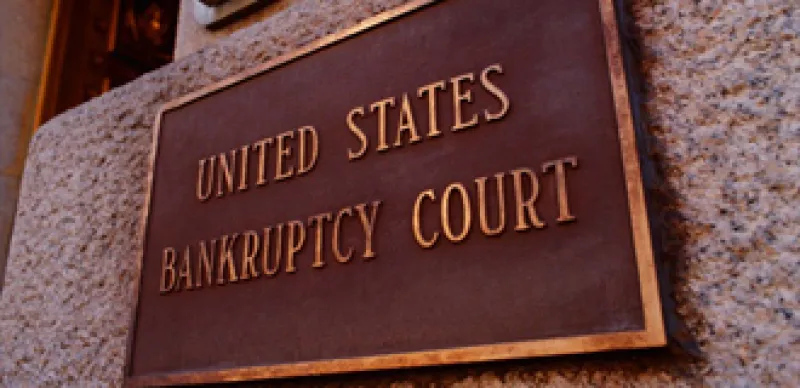Months of turmoil in the municipal bond market have investors worried and lawmakers wondering what to do to resolve the long-term fiscal problems plaguing state governments. The proposal to allow states to enter into bankruptcy proceedings is drawing a lot of attention in Washington and state capitals. The assumption is that bankruptcy status would make it easier for states to renegotiate pension and other benefit promises, potentially removing some fiscal uncertainty and making state bond holdings less risky.
Floated by – among others – former House Speaker Newt Gingrich, this proposal was discussed last week at a House Judiciary Committee subcommittee hearing on whether Congress should pass legislation that permits states to declare bankruptcy.
States currently do not have the legal right to file for bankruptcy. Proponents of the change, who also include former Florida Gov. Jeb Bush and the lobbying group Americans for Tax Reform, say it would enable struggling state governments to unilaterally rewrite pension and other deals with employees before the states' cash flow deteriorated so far that it could no longer service its debt. Federal taxpayers would benefit, too, because if states could clear the decks in this manner, they would be less likely to come to Washington seeking a bailout from Congress.
No legislation has yet been introduced, however. In fact, the bankruptcy proposal has encountered opposition from both left and right. House Majority leader Eric Cantor has said it's not needed because the states have sufficient room to balance their books by cutting spending or raising revenues. In that he found himself in agreement with California State Treasurer Bill Lockyer, a Democrat, who said, “We don’t want it. We don’t need it. Bankruptcy would devastate states’ ability to recover from the recession and make the infrastructure investments that create good jobs.... With respect to our budget shortfalls, we have the tools to fix them.”
But for investors, the question is whether a bankruptcy statute for states would make their interests any more secure and bring some reassurance to a bond market that has suffered violent ups and downs over the past three months. Here, too, it encounters skepticism.
Jonathan Williams, director of the tax and fiscal policy task force for the American Legislative Exchange Council (ALEC), an organization of conservative state legislators, says his group has yet to take a public stand on state bankruptcy. But he noted that if this was an option for states, it could have a “ripple effect in the bond market.”
“A state bankruptcy risk could, obviously, increase borrowing costs to states and limit easy access to the capital markets at a time when a source of funding is needed,” warned James Spiotto, head of the bankruptcy practice at Chapman and Cutler LLP in Chicago, in testimony earlier this month before the House subcommittee on Courts, Commercial and Administrative Law.
Besides the possibility that they might have to take a haircut as part of a workout process, state bondholders could face greater long-term perils as well. “A real concern from a fiscal conservative's perspective would be moral hazard: that states could just hit reset every 10 years by declaring bankruptcy after they spend the taxpayers into oblivion,” says Williams. A state bankruptcy proceeding would likely involve all parties coming to the table – including unions. Case in point is the workout plan approved for the city of Vallejo, California in December, which had significant input from unions. The resulting menu of budget cuts didn't affect city workers' pensions.
Bankruptcy at the state level wouldn't necessarily weigh more heavily on pensions either. David Skeel, a law professor at the University of Pennsylvania who advocated a state bankruptcy law in an article for the conservative magazine The Weekly Standard last November, envisions that it would “give debtor states even more power to rewrite union contracts, if the court approves.” But in some states, employees' rights are enshrined in the constitution.
Spiotto argues that a better approach – at least, in cases where pension benefits clearly are the cause of the fiscal imbalance – would be to create a state “Pension Protection Authority.” It would have the power to decide what retirement benefits are “affordable and sustainable” and what cost cutting measures are needed to make sure pension payments don't “interfere with the provision of essential governmental services.”
Congress could even create a “State Public Pension Funding Commission” where states could bring actions to restructure their pension obligations. The federal government could help out with any restructuring by backing tax-exempt bonds to fund it or even make a bridge loan to do so – but only if the state came up with a reasonable plan to reorganize its long-term pension funding.
Either way, investors might have greater assurance that if a state overextended itself with pension obligations, the problem could be resolved in a more predictable manner than under bankruptcy. The other advantage, Spiotto says, is that unlike with bankruptcy, the solution wouldn't necessarily drag in a host of other constituents – such as bondholders – who may not be part of the problem.
But even that may be a hard sell to conservatives, who have long been angling for greater state autonomy from the federal government – not less. “some of our members would be quite leery of the federal government taking over a restructuring process,” warns ALEC's Williams.
Without some kind of procedure enabling states to resolve pension and other fiscal problems in an orderly manner, the job is likely to remain with state governors and legislatures – and investors can expect more uncertainty ahead.






